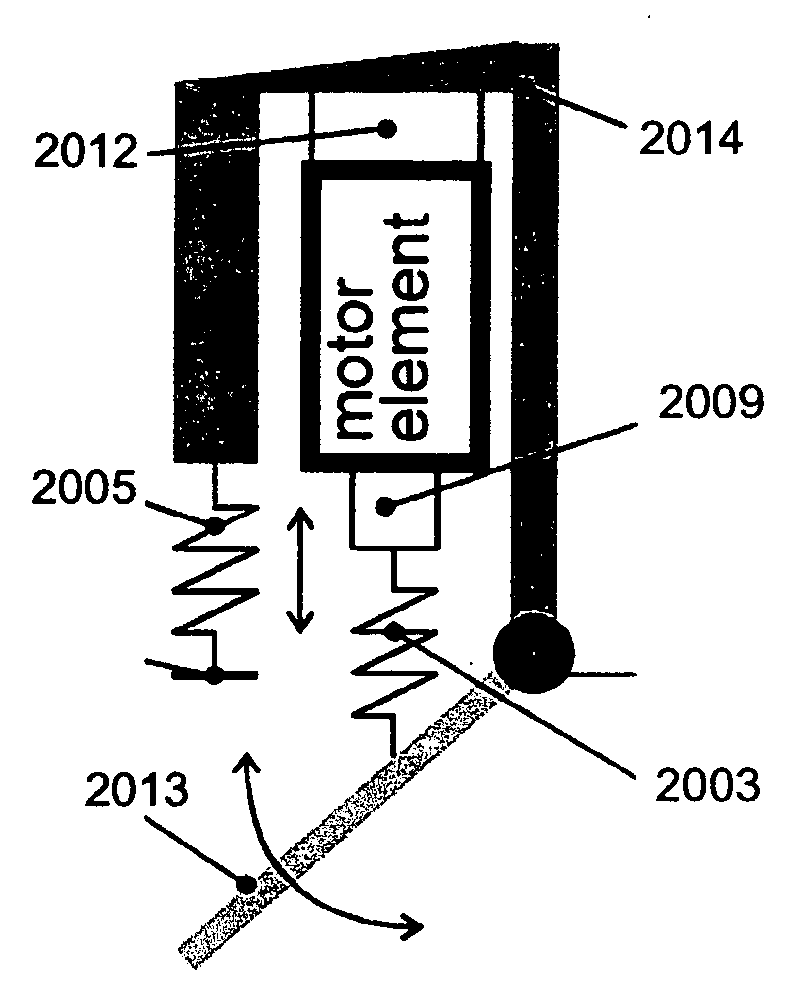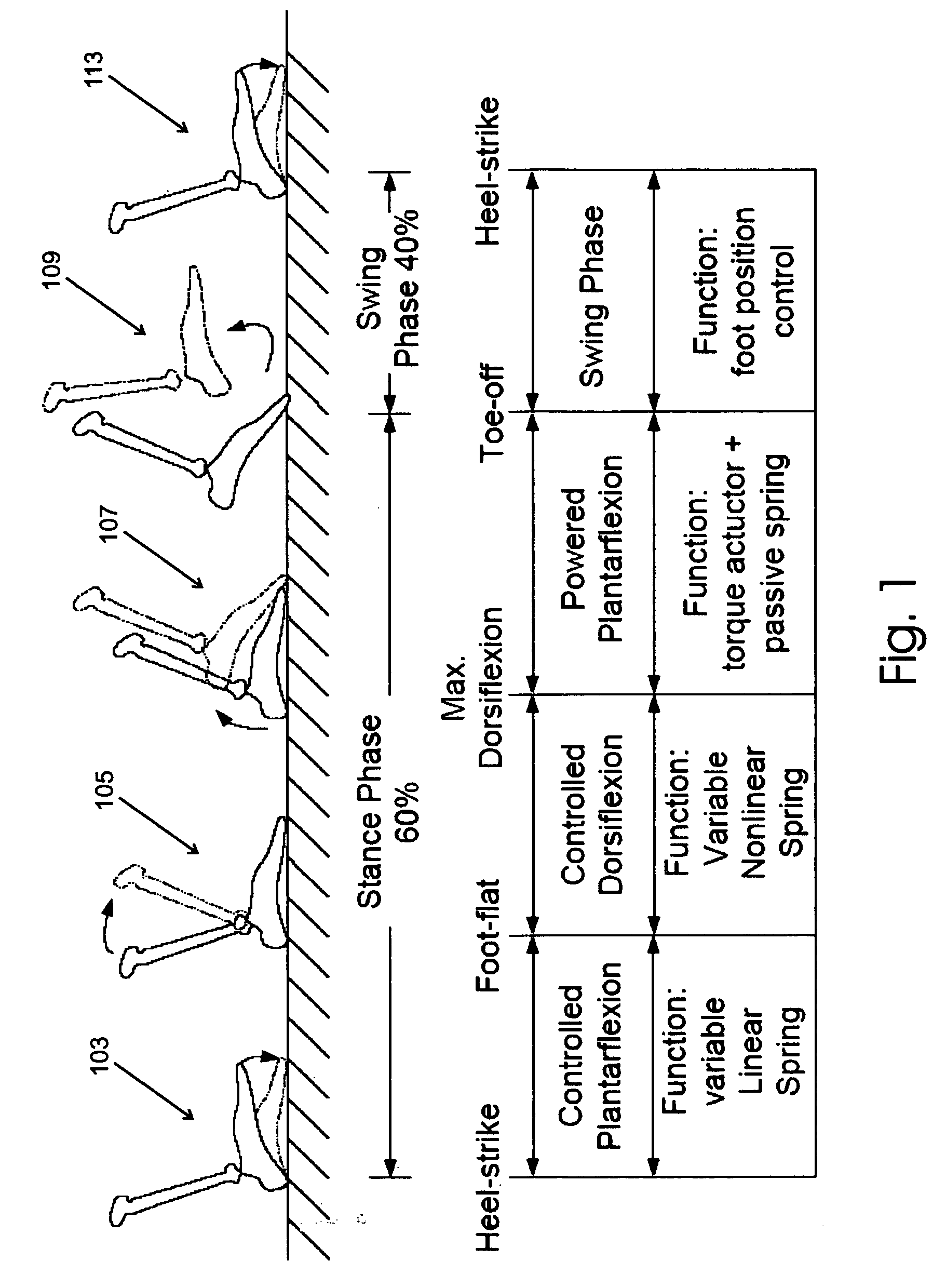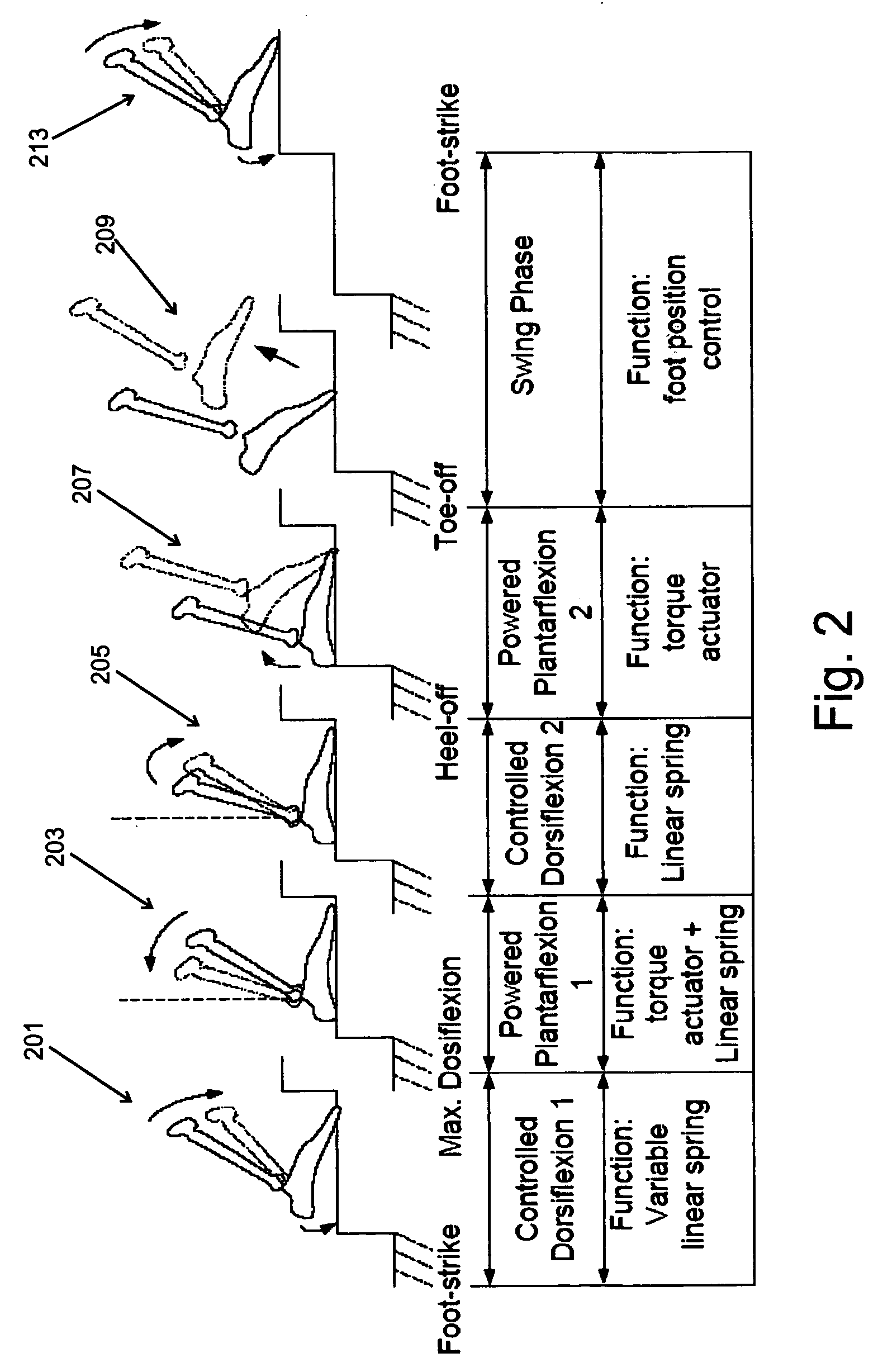Artificial human limbs and joints employing actuators, springs, and variable-damper elements
- Summary
- Abstract
- Description
- Claims
- Application Information
AI Technical Summary
Benefits of technology
Problems solved by technology
Method used
Image
Examples
embodiment 1
[0121] Mechanical Design
[0122] Embodiment 1 is depicted in FIGS. 12-14. As seen in the lumped parameter model of FIG. 12, the first embodiment implements an artificial ankle and comprises a motor 1201 and a global variable damper 1203 to provide control of joint position and mechanical energy absorption rate. In the description that follows, it will be shown how this first embodiment may be used to implement an artificial ankle, with a global one way spring 1205 being placed in parallel with the motor 1201 and the global variable damper 1203 between the parent link 1210 at the shin and a child link 1212 at the foot.
[0123] As seen in the schematic diagram of FIG. 13, the first embodiment forms a joint 1300 between the parent link seen 1301 (at the shin shown at 1210 in FIGS. 12 and 1402 in FIG. 14) and a child link 1303 (at the foot link seen at 1212 in FIG. 12 and at 1408 in FIG. 14). An electric motor seen at 1305 (and at 1201 in FIGS. 12 and 1401 in FIG. 14) rotates the foot mem...
embodiment 2
[0129] Mechanical Design
[0130] Embodiment 2 is shown in FIGS. 15-18. As seen by a comparison of the lumped parameter models seen in FIGS. 12 and 15, and also comparing the schematic drawings of FIGS. 13 and 16, it may be seen that the second embodiment includes an additional “motor series spring” element seen at 1501 in FIG. 1, at 1601 in FIG. 16, and at 1701 in FIGS. 17 and 18. In addition to the capabilities offered by Embodiment 1, Embodiment 2 provides for the control of hybrid actuator force by an active spring deflection control by the motor and an active damping control by the variable damper. In addition, Embodiment 2 includes the capacity to act as a catapult where a spring is slowly compressed and that stored potential energy is used all at once at a later time. For the catapult control, the global variable-damper 1605 will be able to control the damping of the joint in order to modulate how much energy is actually released from the stored catapult energy. In the section ...
embodiment 3
[0136] Mechanical Design
[0137] Embodiment 3 is shown in FIGS. 19-21 and also comprises a motor, a motor series spring, and a variable damper in parallel with the motor as seen in FIG. 19. The third embodiment differs from the second in that the variable damper is connected to retard motor motion. In addition to the capabilities offered by Embodiment 1, Embodiment 3 provides for low-power spring stiffness and spring equilibrium point control.
PUM
 Login to View More
Login to View More Abstract
Description
Claims
Application Information
 Login to View More
Login to View More - R&D
- Intellectual Property
- Life Sciences
- Materials
- Tech Scout
- Unparalleled Data Quality
- Higher Quality Content
- 60% Fewer Hallucinations
Browse by: Latest US Patents, China's latest patents, Technical Efficacy Thesaurus, Application Domain, Technology Topic, Popular Technical Reports.
© 2025 PatSnap. All rights reserved.Legal|Privacy policy|Modern Slavery Act Transparency Statement|Sitemap|About US| Contact US: help@patsnap.com



